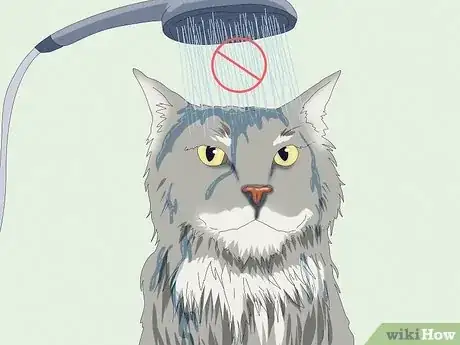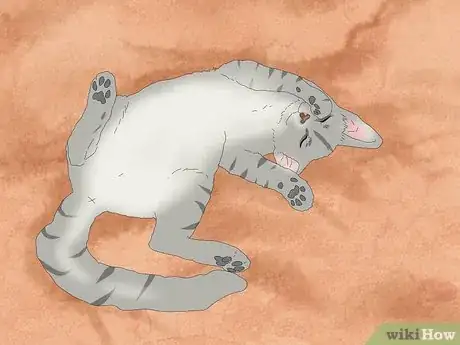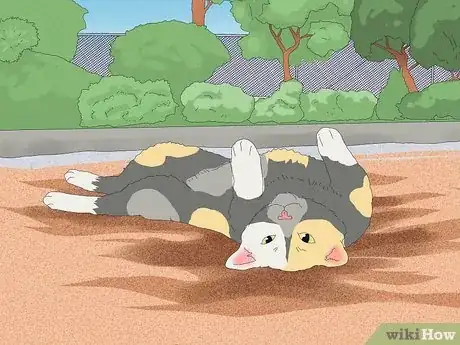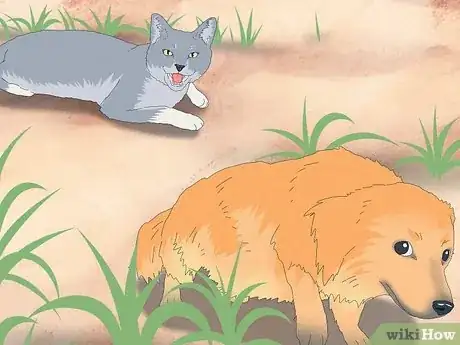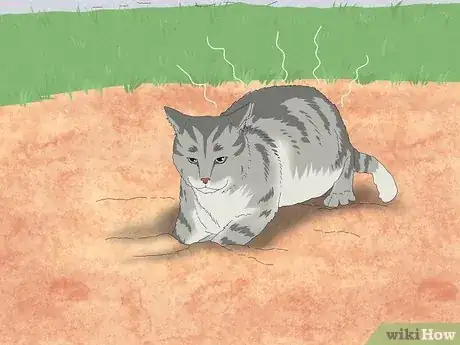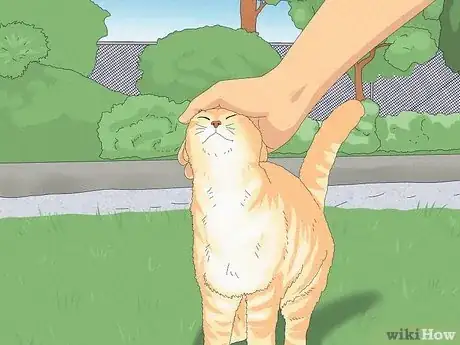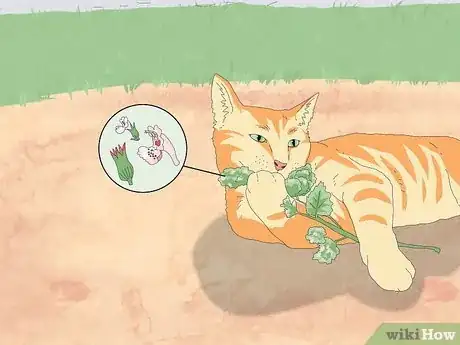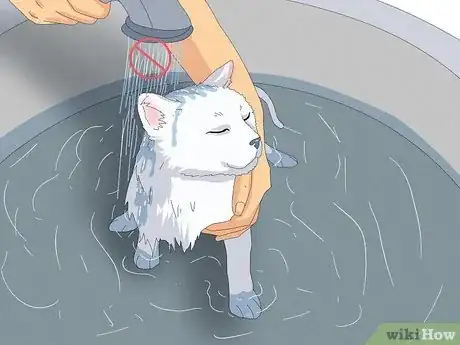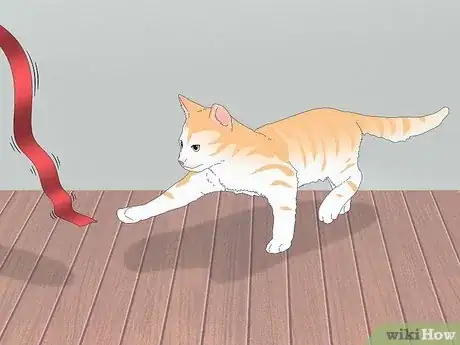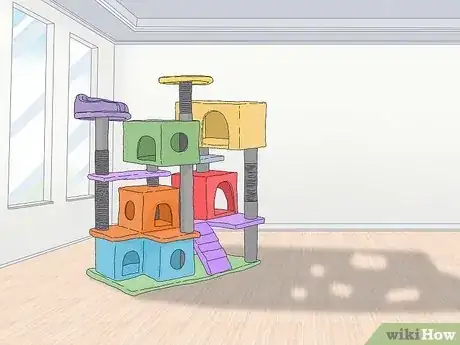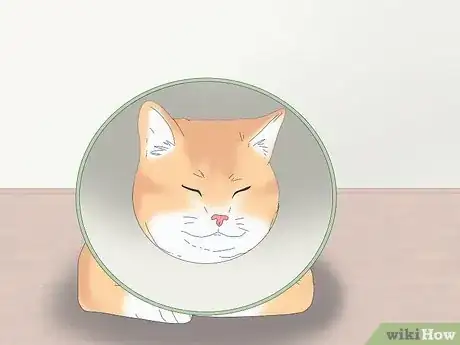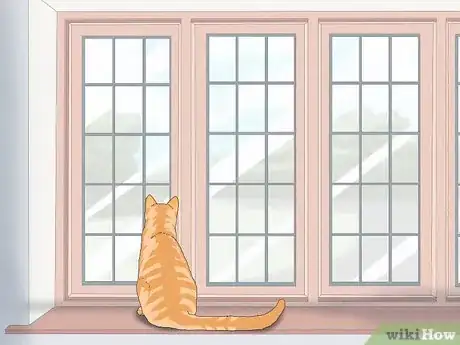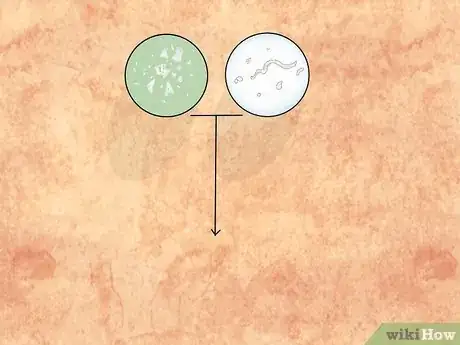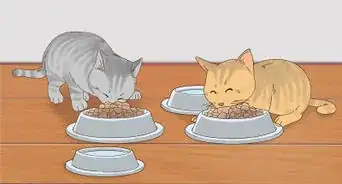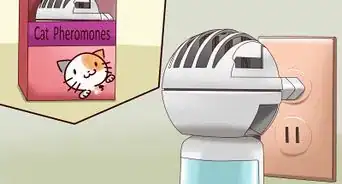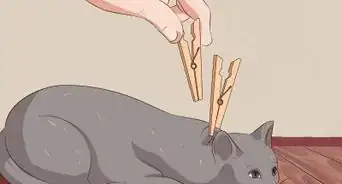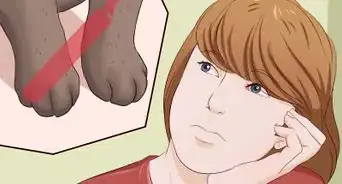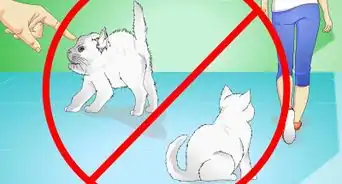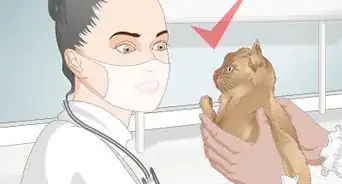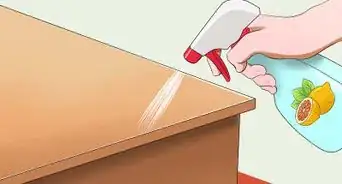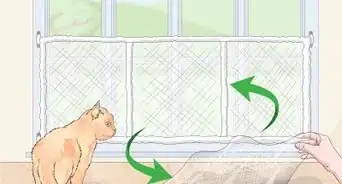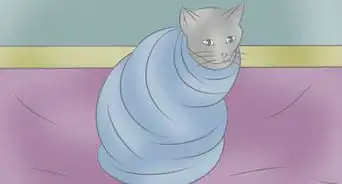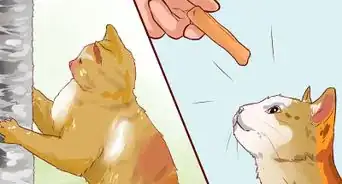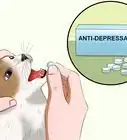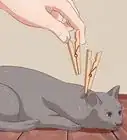This article was co-authored by Russell Hartstein, CDBC, CPDT and by wikiHow staff writer, Danielle Blinka, MA, MPA. Russell Hartstein is a Certified Dog & Cat Trainer and CEO of Fun Paw Care in Los Angeles, California. With over 25 years of training, nutrition, boarding, and daycare experience, Russell and the Fun Paw Care team provide the most current, humane, and science-based methods utilizing force-free positive reinforcement to train and care for pets. Russell is an author for PetMD, Chewy, and Dogster. He is also regularly cited in publications from various organizations, including The New York Times, The Wall Street Journal, and the American Veterinary Medical Association (AVMA). He is a Certified Dog Behavior Consultant with the International Association of Animal Behavior Consultants and a Certified Pet Dog Trainer. He received his bachelor’s degree in History and Economics from Binghamton University.
There are 15 references cited in this article, which can be found at the bottom of the page.
You cat could be playing anywhere, but instead they’re rolling around in the dirt. What gives? As it turns out, your kitty has lots of reasons to roll in dirt, which is also called a dust bath. We’re here to help you figure out what’s going on with your feline friend. Even better, we’ll help you stop the madness and keep your kitty’s fur a little bit cleaner.
Things You Should Know
- Cats roll in the dirt when they need bacteria to help digest their food.
- They also roll in the dirt to scratch an itch or cool down.
- Your cat might be rolling in the dirt to mark their territory.
- Female cats might roll around in the dirt because they’re in heat.
Steps
Why do cats roll around in the dirt?
-
1You might be bathing your cat too often. Beneficial bacteria naturally live on your kitty’s skin, and they eat the bacteria when they groom themselves. That might sound gross, but your cat actually needs the bacteria to properly digest their food. When you bathe your cat too often, the bacteria die, and your cat needs a way to replenish them. Since these bacteria live in dirt, your cat feels an innate urge to roll around in the dirt.[1]
- Later, your cat will ingest some of the bacteria from the dirt as they groom themselves.
-
2Your cat might be itchy. Dry skin and pests—such as fleas—can make your kitty super itchy. If they can’t reach their back, they might roll around to relieve the itch. Since dirt is gritty, it gives your cat added relief.[2]
- Check your cat for fleas by combing your cat with a flea comb to see if you recover any fleas. Additionally, look for patches of missing fur from scratching.
Advertisement -
3Your cat could be playing. Kitties love to play and have fun, and sometimes there’s nothing more fun than rolling around in the dirt. They can dig, flip, flop, and make a huge mess. It checks all the boxes for a good time.[3] Your cat doesn’t care that it bothers you.
- If this is the case for your cat, you’re in luck! It’s fairly easy to redirect your cat with a more interesting toy, like a fuzzy mouse or a feather on a stick.
-
4Your cat may be trying to cool down. If it’s hot out, your cat might be feeling overheated. Cats run hot and are covered in a fur coat, so they can get really toasty on steamy days. While the top layer of dirt is also warm, rolling around reveals a cool layer of ground for your cat to comfortably lay on.[4]
- If your cat wants to cool off, you’ll probably see them lounging on the spot once they’ve shifted the dirt around a bit.
-
5Your cat might roll around to mark their territory. Since cats are very territorial, they love to rub their scent everywhere—especially if there are other critters around. When your kitty rolls around, they leave their scent behind for other animals to find. Since cats often rub their scent on the same items over-and-over, your furbaby will probably insist on rolling in that same spot every time they go out.[5]
- If there are a lot of other cats around, expect your kitty to do some territory marking. They need to send a message to all the interlopers.
-
6Your cat could be covering up their own smell. On the flip side, rolling around in the dirt also allows your cat to pick up the scent in the soil. They might want to smell like dirt because they’ve gotten an unpleasant scent on their fur. Alternatively, they may be worried about predators and want to feel incognito. Either way, your cat sees a romp in the dirt as a solution to their problems.[6]
-
7
-
8Your cat might have munched on some catnip. Since fresh catnip is a common herb, your kitty can get into a stash even if you’re not their supplier. After getting their paws on the good stuff, your cat might find themselves rolling around in the dirt.[8] Rolling around and flopping on the ground is actually a common reaction to catnip, and your cat will probably do it for around 10 minutes before they start staring off into space.[9]
- If your cat is getting into someone’s catnip plant, you’ll have a hard time stopping them. You could try talking to your neighbors to see if anyone is growing it. Chances are, they know your kitty has been by because of the tell-tale munch marks on their plant.
-
9They may be in heat and hoping to attract a partner. Female cats go into heat as often as every 2 to 3 weeks. During that time, they’re feeling extra affectionate and will do practically anything to lure over a male cat. For some cats, rolling around is all part of the seduction, which might end in a messy dust bath for an outdoor cat.[10]
- The only way to stop your kitty from going into heat is to spay them. If your cat goes outside, it’s super important that you get them spayed so that they won’t get pregnant.[11]
How to Stop a Cat from Rolling in Dirt
-
1Cut back on how often you bathe your cat. Since cats groom themselves, you don’t really have to bathe them. In fact, bathing your cat too often can remove the good bacteria from their skin, which they need to ingest to properly digest food. Let your kitty give themself baths and keep themself clean. Only bathe your cat if they're very dirty or smelly.[12]
- Cats are typically clean animals, so you don’t need to worry about your kitty being dirty without baths.
-
2Take your cat to the vet if they’re scratching a lot. Your cat may have fleas or ticks that are causing their itch, but it’s also possible that they have a skin condition. To find out, visit your vet for a diagnosis and treatment.[13] They’ll have your kitty feeling better soon!
- If your cat has fleas or ticks, your vet can give you medicine to kill the fleas and ticks.
-
3Play with your cat. If your kitty plays in the dirt, become their playmate instead. Try dangling a ribbon in front of your cat so they can chase it, or blow bubbles for them to chase. For another option, place your kitty’s favorite toy under a blanket or rug so they can dig it out.[14] Just give your furbaby lots of attention, and they’ll hopefully forget all about the dirt.
- Give your cat lots of toys to choose from so they don’t get bored.
- Turn an old box into a playhouse for your kitty by cutting a door in the side of the box and putting a blanket or toys inside.
- Put food in a cardboard toilet paper roll and seal the sides. Then, let your kitty shred the cardboard to get to the food inside.
- Want to add a few more toys to your cat's collection? Check out wikiHow's Petco promo codes, Chewy promo codes, and Petflow promo codes and see if you can snag any deals.
-
4Set up a cat tree that your kitty can rub. Giving your cat something to rub may distract them from rolling in the dirt. Your cat will love brushing up against its cat tree. Plus, cats have an innate desire to scratch, which also leaves their scent behind.[15] Place the cat tree where it’s easy for your kitty to access.
- If your cat is exclusively outside, put the cat tree on your porch to protect it from the elements.
-
5Spay your female cat so she doesn’t go into heat. Your cat will continue to go into heat as often as every 2 to 3 weeks.[16] To stop the cycle, take her to the vet to get her spayed. Afterwards, she’ll stop all the annoying behaviors that she does while she’s in heat, including rolling in dirt.[17]
- If you’re low on funds, check your city or town’s website to see if they have a low cost spaying and neutering program. You can also call local shelters who may be able to point you toward an affordable option.
-
6Build a catio so your cat can safely enjoy the great outdoors. Catios allow your kitty to go outside in a safe, secure container. Luckily, it’s easy to build a catio yourself. For an easy option, attach a catio to a window you can leave open when your cat wants to go out. As another option, enclose your porch or patio so your kitty can safely enjoy it.[18]
- You could also try walking your cat on a leash so you can keep them out of the dirt.
-
7Bring your cat inside if nothing else works. If your kitty just loves the dirt, you’ll have a hard time keeping them out of it. It sounds obvious, but your kitty can’t roll in the dirt if you keep it indoors. Plus, your cat will be safer inside, as outdoor cats are at risk for accidents, injuries, and accidental poisoning.[19] Just make sure your kitty has lots of toys to play with and gets to spend plenty of time with you.
Tip
- Your cat may also take dust baths in their litter box. Sometimes cats do this because they’re bored or anxious. They might also want to mark the box as their territory. On the other hand, your cat could have a medical issue that’s causing them to potty a lot or they might be pregnant and preparing to give birth.[21]
References
- ↑ https://www.lovingmeow.com/why-do-cats-roll-in-the-dirt/
- ↑ https://www.lovingmeow.com/why-do-cats-roll-in-the-dirt/
- ↑ https://www.animalwised.com/why-do-cats-roll-on-the-ground-2168.html
- ↑ https://www.lovingmeow.com/why-do-cats-roll-in-the-dirt/
- ↑ https://catcarrol.com/why-do-cats-roll-in-the-dirt/
- ↑ https://catcarrol.com/why-do-cats-roll-in-the-dirt/
- ↑ https://www.petfriendlyhouse.com/why-do-cats-roll-in-dirt/
- ↑ https://www.animalwised.com/why-do-cats-roll-on-the-ground-2168.html
- ↑ https://www.humanesociety.org/resources/crazy-catnip
- ↑ https://www.petfriendlyhouse.com/why-do-cats-roll-in-dirt/
- ↑ https://www.avma.org/resources/pet-owners/petcare/spaying-and-neutering
- ↑ https://www.animalwised.com/is-it-bad-to-bathe-cats-1284.html
- ↑ https://www.merckvetmanual.com/cat-owners/skin-disorders-of-cats/itching-pruritus-in-cats
- ↑ https://www.helpguide.org/articles/healthy-living/joys-of-owning-a-cat.htm
- ↑ https://www.vet.cornell.edu/departments-centers-and-institutes/cornell-feline-health-center/health-information/feline-health-topics/feline-behavior-problems-destructive-behavior
- ↑ https://www.bestfriendsvets.co.uk/article/male-female-cats-in-heat-what-you-need-to-know/
- ↑ https://www.avma.org/resources/pet-owners/petcare/spaying-and-neutering
- ↑ https://spca.bc.ca/news/how-to-build-a-catio/
- ↑ https://www.ncbi.nlm.nih.gov/pmc/articles/PMC7909512/
- ↑ https://faqcats.com/why-do-cats-roll-in-dirt/
- ↑ https://worldanimalfoundation.org/cats/why-is-my-cat-playing-in-the-litter/
